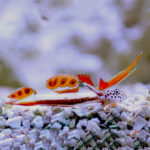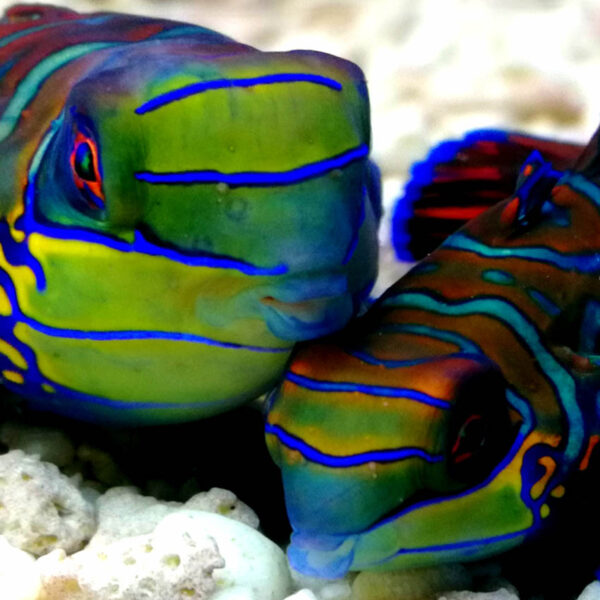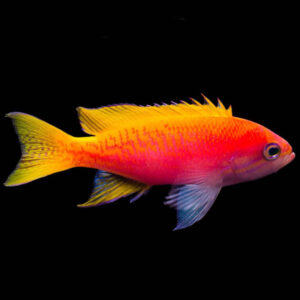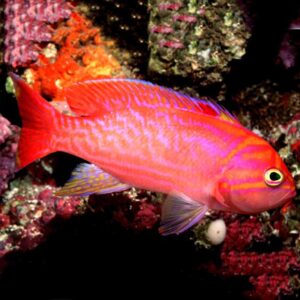Description
Blue Mandarin pairs, Synchiropus splendidus, also go by the name Mandarinfish. These are charismatic fish that show off vibrant colours and patterns. They have large pectoral fins that they use to perch on. Males also sport large dorsal spines that they flare when displaying.
These fish are Dragonets. Meaning they belong to the Callionymidae family. This name comes from the Greek words for: “beautiful” (kallis), and “Name” (onyma).
Blue Mandarin Pairs, Synchiropus splendidus, ecology:
These fish occur in lagoons or reefs, in the Pacific Ocean. They live around Australia and the Ryukyu Islands. Blue Mandarins are bottom dwellers that keep to loose groups in amongst coral or rubble. Here they hunt for zooplankton, such as: copepods, amphipods, larvae or eggs. To protect them against predators and pests, they have a thick mucus coat.
These Dragonets broadcast spawn under cover of night. Blue Mandarin pairs release their gametes as they swim upwards, belly to belly, spinning as they go. The fertilised eggs then drift away in the current.
Mandarinfish in the Aquarium:
It is important to have plenty of nooks or crannies where your Blue Mandarin pair can explore and feel at home. Keepers may want to invest in a jump guard to prevent accidents.
Blue Mandarins are carnivores but do best when fed a varied diet. They will eat live foods, such as copepods and brine shrimp, that can be cultivated in attached refugium. Over time, they can accept frozen Mysis shrimp and frozen brine shrimp. We enrich all our frozen food with seachem garlic guard and Atvitol vitamins. These are great for keeping fish healthy by providing them with the nutrition otherwise lost in frozen food. In doing so, these additives support their immune system and increase longevity.
These fish can also go for masstick that can be rubbed onto the rockwork or tank sides. Blue Mandarin Pairs can eat pellet food as well. However, getting them to do so requires persistence. We adapt all our Mandarins to aquarium life before they leave us.
Blue Mandarins can live alone or in a male and female pair. Success depends on a fair number of variables. For example, factors to consider include: the species, tank size, space and cover available. Please give us a call if you want to know more.
The Fish pictured here are representative only and the livestock you receive may vary in pattern, coloration, and shape.








